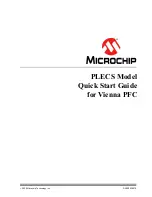
12
ZABER TECHNOLOGIES INC.
The parameter of 10000 in the move command above specifies 10000 microsteps. To see the
microstep size (default resolution) for the peripheral and how it translates to displacement, first go
to the product overview page, find your device, click through to the device's webpage, and click on
the "Series Specs" tab. The microstep size (default resolution) will be shown in the list of product
specs either in the "Group Specifications" section or the "Comparison" section.
6.1. Daisy-Chaining Devices
Multiple devices can be connected together in a chain through the Prev and Next connectors. This
allows any number of devices to be controlled from a single connection to a computer, reducing
cabling demands. In addition, X-Series devices carry power through the daisy chain, so in most
cases a power supply only needs to be connected to one device in the chain. Whenever a device
is added or removed from a chain, a renumber (T:2) command should be sent to prevent
device-address conflicts.
To daisy-chain X-Series devices with T-Series and A-Series devices:
• Ensure all devices are set to the same communication protocol and baud rate before
connecting them. If any T-Series devices will be in the chain, then the communication protocol
must be Binary at 9600 baud rate.
• Connect any X-Series devices at the start of the chain (closest to the computer). This
configuration will reduce the number of adaptor cables required.
• Connect a T-XDC (or S-XDC for daisy-chaining an A-MCB2) adaptor cable to the Next
port of the last X-Series device in the chain, and to the Prev port of the T-Series or A-Series
device.
• Power supplied to an X-Series device will not be transmitted to any T-Series or A-Series
devices in the chain.
• Contact Zaber Technical Support for assistance selecting connecting cables when
daisy-chaining multiple series.
















































